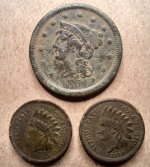Marine Archaeology Int.
Jr. Member
Colombia makes public the new APP (Private-Public Association) for the recovery of the galleon San Jose. The document is lengthy. Key points are: Originator to invest $68M; Term of the contract: 12 years; name of the Originator: MARITIME ARCHAEOLOGY CONSULTANTS SWITZERLAND; rate of return to the Originator 45% (of those items classified as non submerged cultural patrimony of the country).







